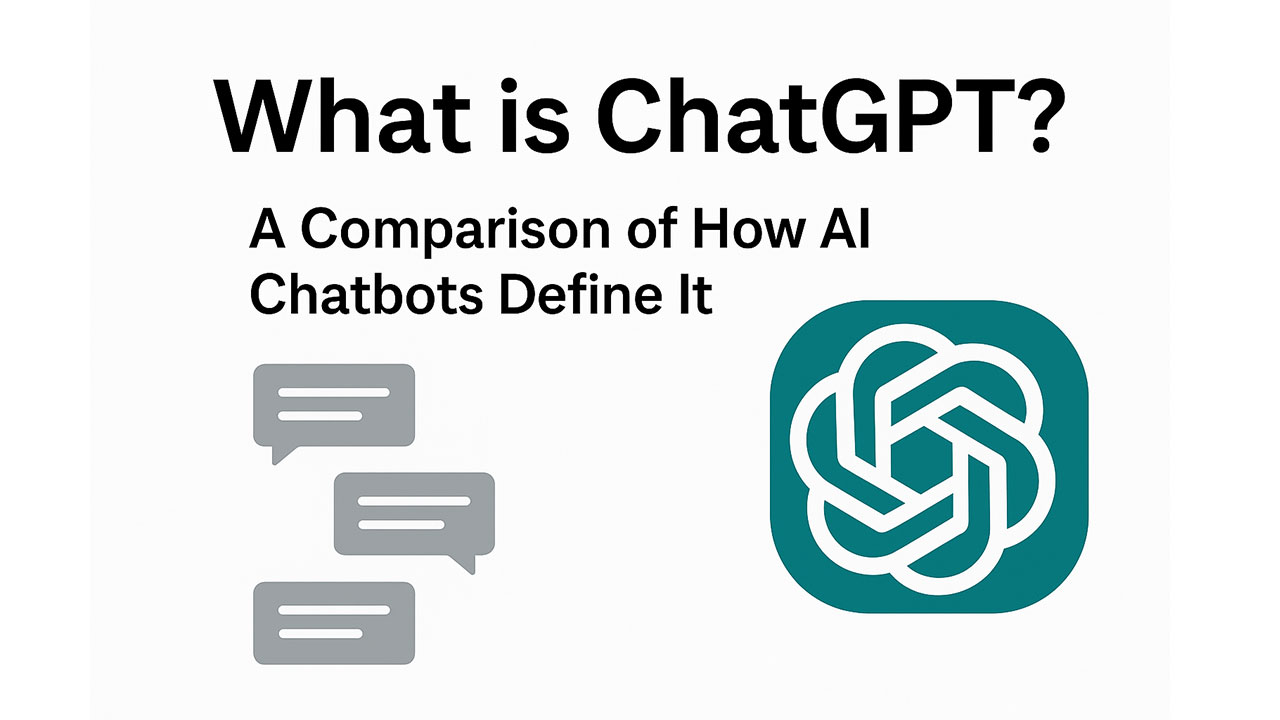ChatGPT, the AI chatbot from OpenAI, came on the scene on November 30, 2022, and completely changed the game. It uses natural language processing (NLP) to chat with you in a way that feels totally human, and it can do everything from writing articles and generate images to giving you advice and even writing code.
Since its release, ChatGPT has received significant media attention. Its popularity has largely driven the current boom in AI, sparking the development of many competing products like Google Gemini (formerly Bard) and Anthropic’s Claude.
Now I will ask this question to popular AI chatbots to see how each one answers the question “What is ChatGPT?” and finally analyze and compare how AI chatbots define ChatGPT.
AI Chatbots answer the question What is ChatGPT?
Gemini’s Answer
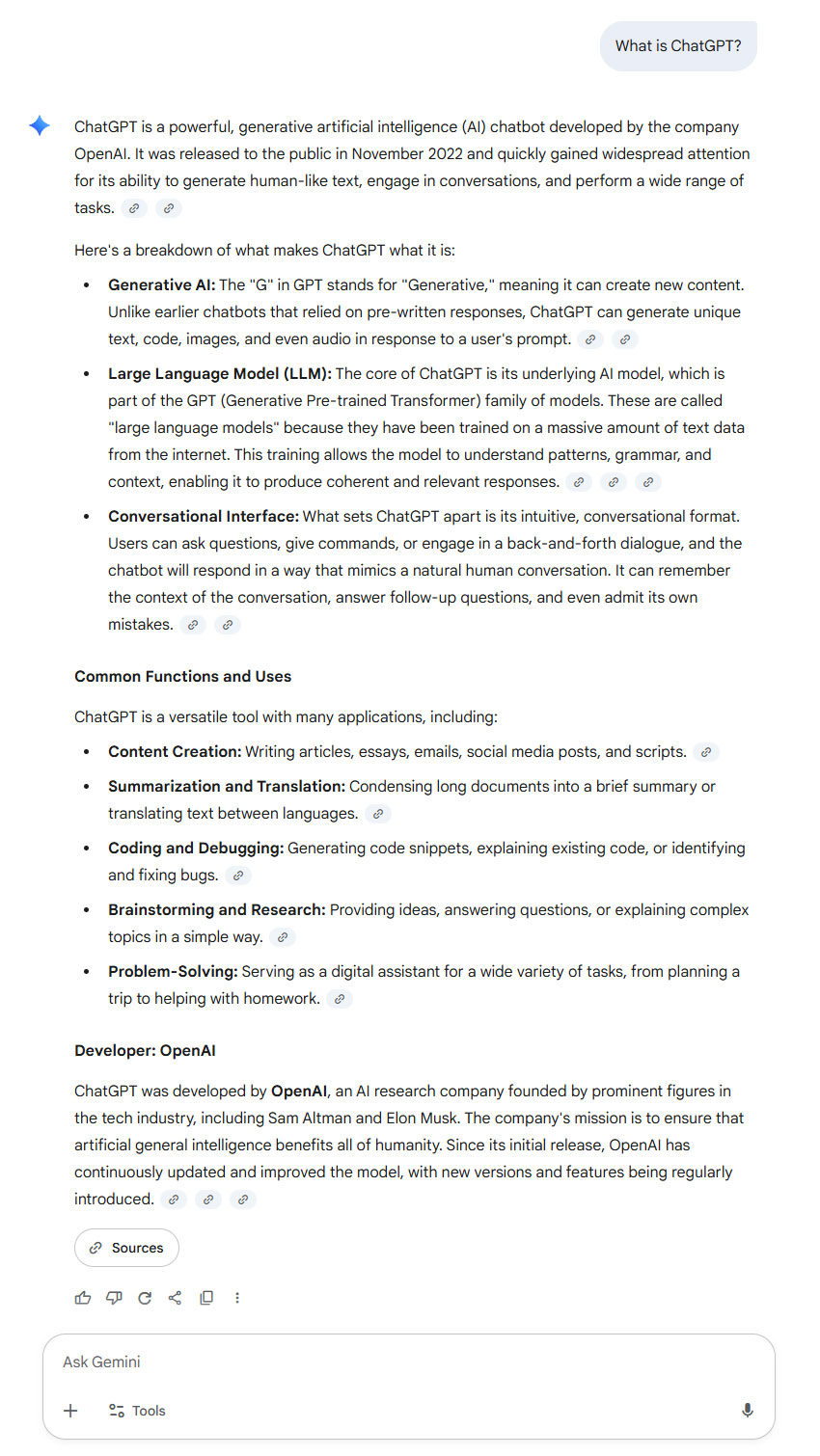
Gemini’s answer provides a comprehensive and detailed definition. It starts with a concise and engaging introduction before diving into more specific details.
Interestingly, the answer is structured into three main sections: Generative AI, Large Language Model (LLM), and Conversational Interface. This organized structure makes it very easy for the reader to understand the function of each component.
The tone is friendly and educational. The use of phrases like “Here’s a breakdown” indicates a helpful approach aimed at improving understanding. By including the “Common Functions and Uses” section, the answer also highlights the practical applications of ChatGPT, moving beyond a purely theoretical explanation.
ChatGPT’s Answer
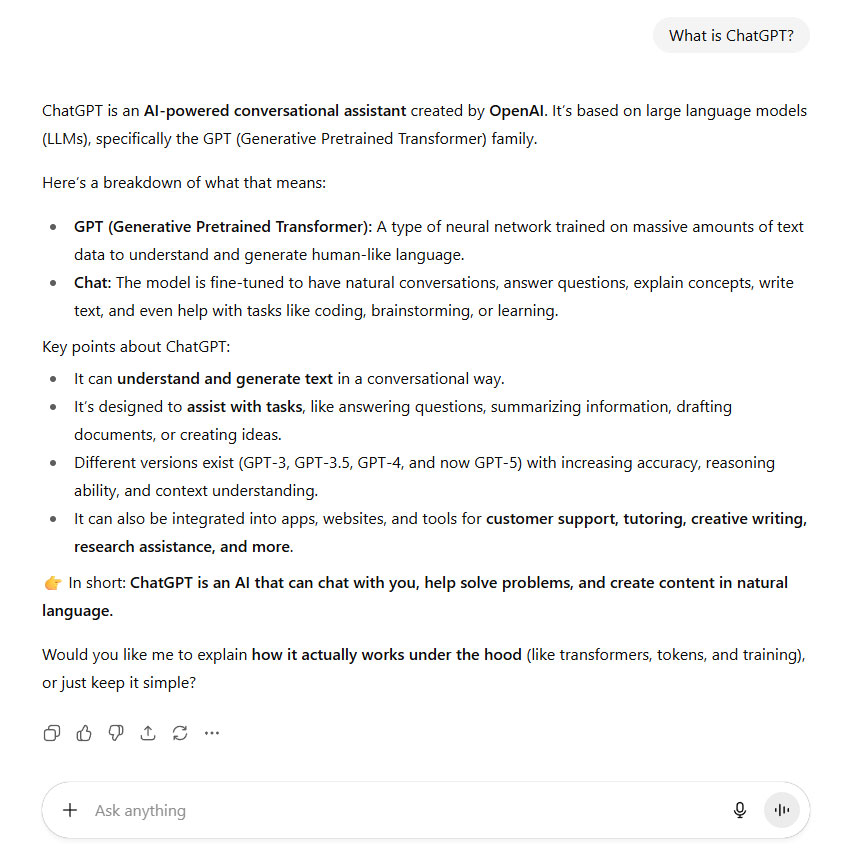
ChatGPT’s answer tone is friendly at first and becomes more formal. It uses technical terms like LLM and Transformer and then explains them simply, making them easy for anyone to understand. At the end, it provides a short summary and asks you a question to see if you want to know more, which shows it’s designed to keep the conversation going.
DeepSeek’s Answer

DeepSeek’s answer is very comprehensive and detailed. Unlike a casual conversation, it’s structured like a complete article or report. It starts with a summary, then dives into technical details like the meaning of GPT and how it works. It even covers limitations, use cases, and who created it.
The answer provides very precise details on technical aspects and limitations. For example, it gives useful explanations for “Hallucinate” and “Knowledge Cutoff.”
Meta AI’s Answer
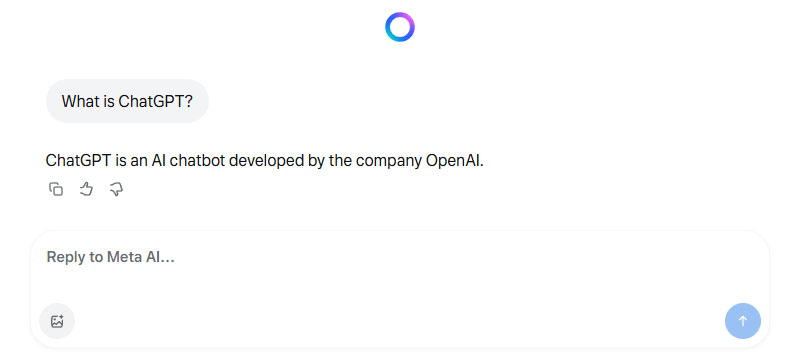
Meta AI’s answer is just a single sentence with no extra details or explanations, and it only mentions two key points:
- Nature: An AI chatbot
- Developer: The company OpenAI
This answer is perfect for someone who only wants the core definition and nothing else.
Grok’s Answer
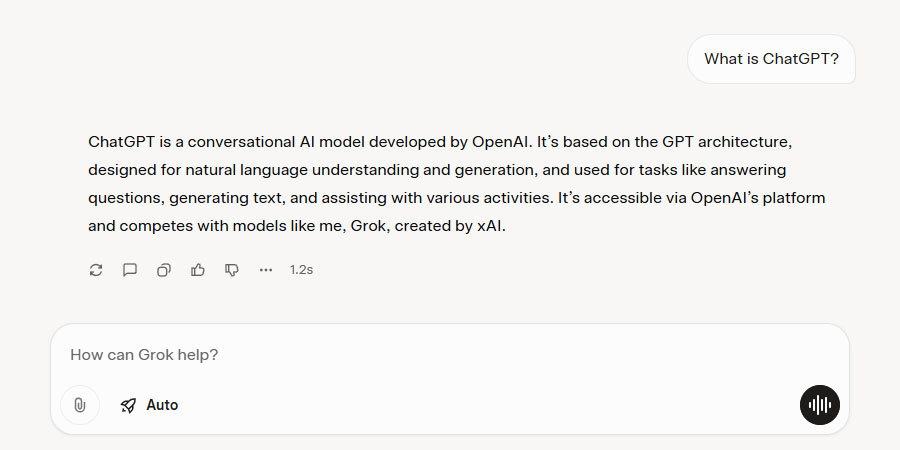
This answer from Grok is very concise and to the point. Unlike some chatbots that might be verbose, this one focuses only on the definition and key details. Finally, it adds an interesting and informal touch by comparing itself to ChatGPT, noting that it’s a competitor.
Claude’s Answer
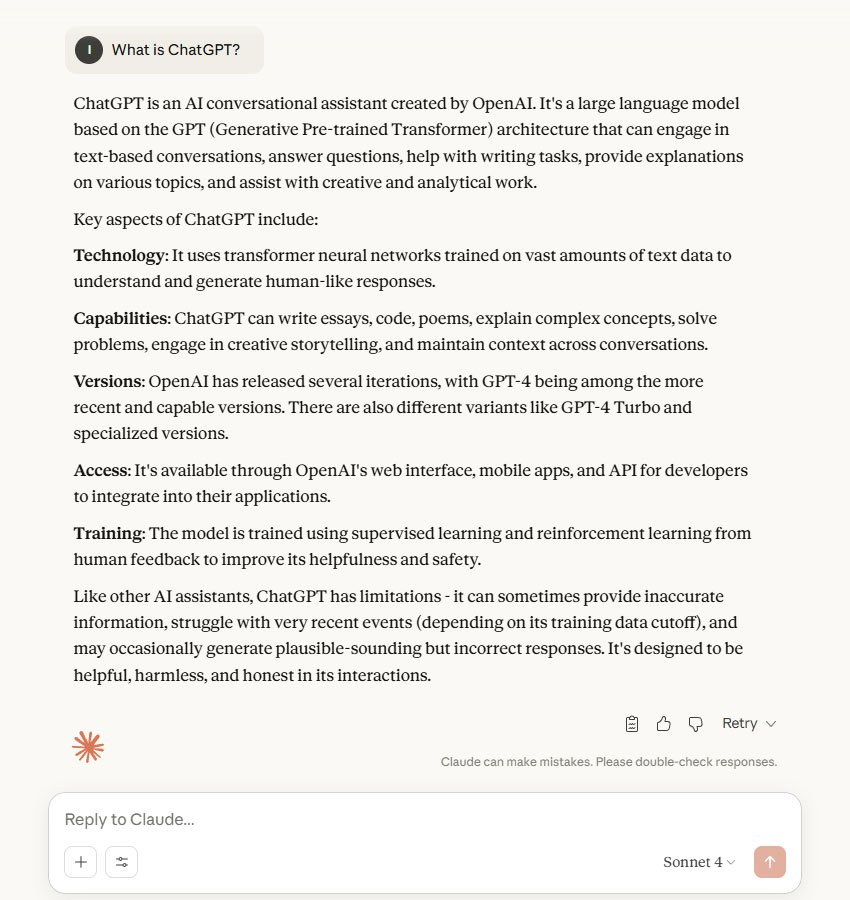
Claude’s answer is very precise and technical. It starts with a general definition of ChatGPT and then uses a list to explain its key features. The tone is completely formal and specialized, written as if it’s an academic article or a technical paper.
The structure is very well-organized. It begins with a short paragraph giving a general definition, and then uses a bulleted list to separate the details, which makes the information easier to digest. The information provided is very comprehensive and thorough, even mentioning details like different versions (e.g., GPT-4) and access methods (API and apps). It concludes with a paragraph on the model’s limitations, which shows that the answer is balanced and fair.
Chatsonic’s Answer
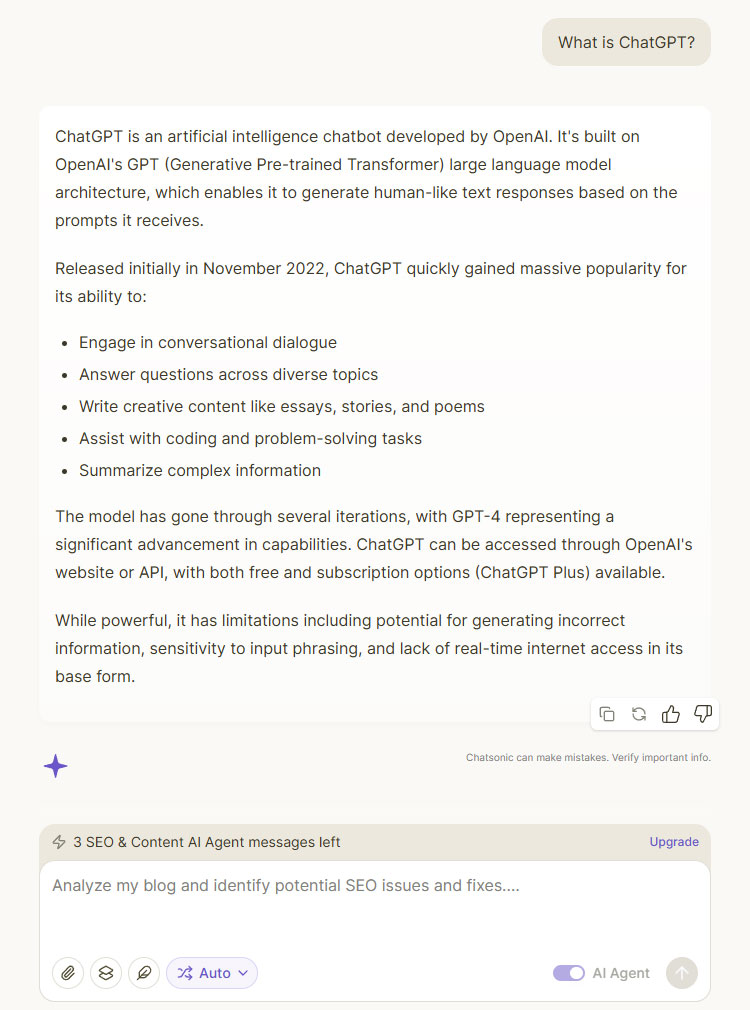
Looking at Chatsonic’s answer, you can see it’s quite direct and comprehensive. The tone is more formal and technical, using specific terms like “Generative Pre-trained Transformer” and “iteration.”
The structure is very organized. It starts with a brief, general definition, then lists the main capabilities of ChatGPT, which makes it easy to read. Finally, it touches on the limitations, providing a complete and balanced overview of the topic.
Perplexity’s Answer
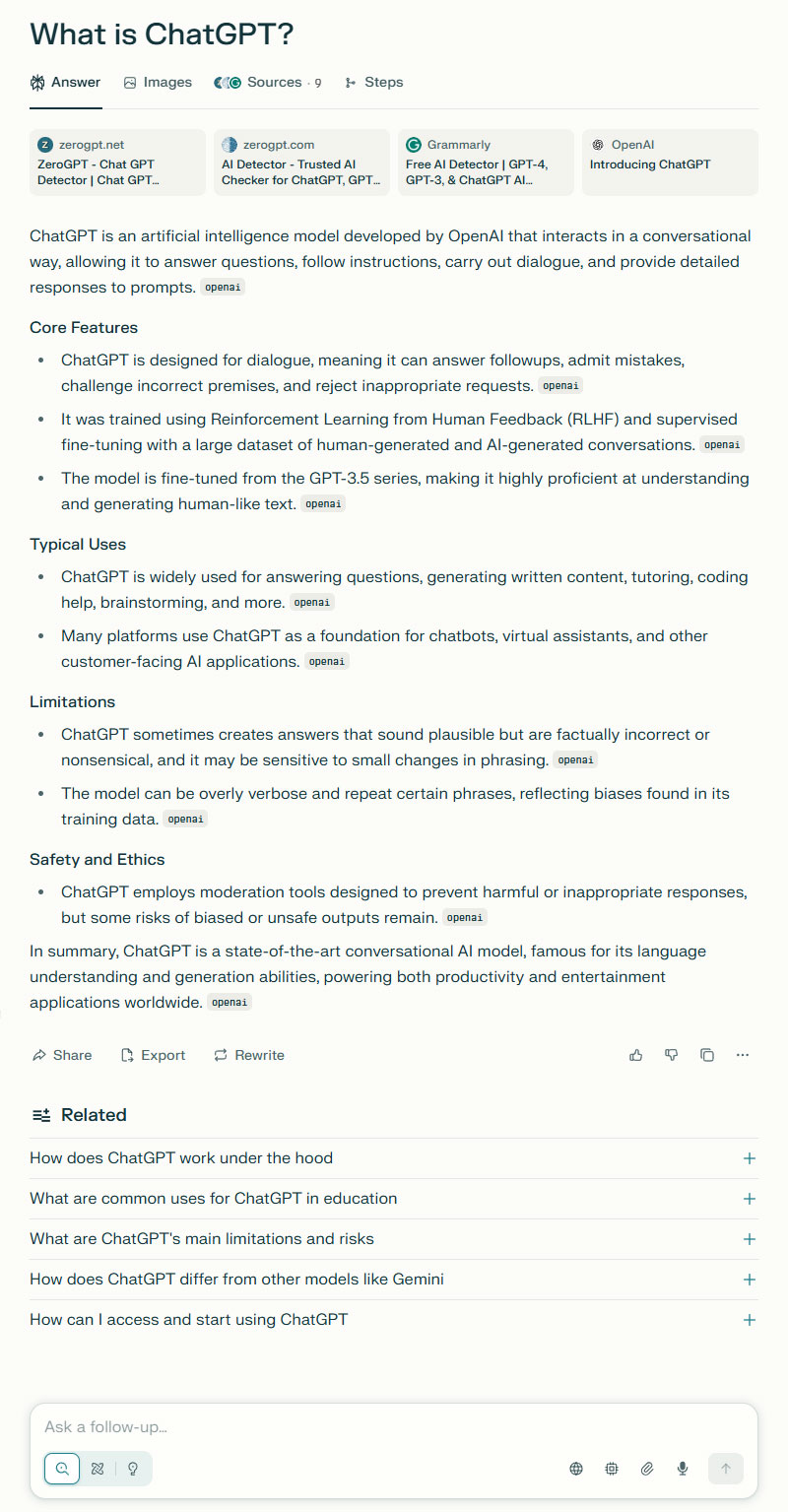
Perplexity’s answer starts with a straightforward definition of ChatGPT and then breaks down the information into three key sections: Core Features, Typical Uses, and Limitations. This structured approach makes the content very readable and informative.
Interestingly, the final paragraph summarizes the entire answer, re-emphasizing the model’s core attributes. This shows a clear and deliberate effort to provide a thorough and well-organized answer.
You.com’s Answer
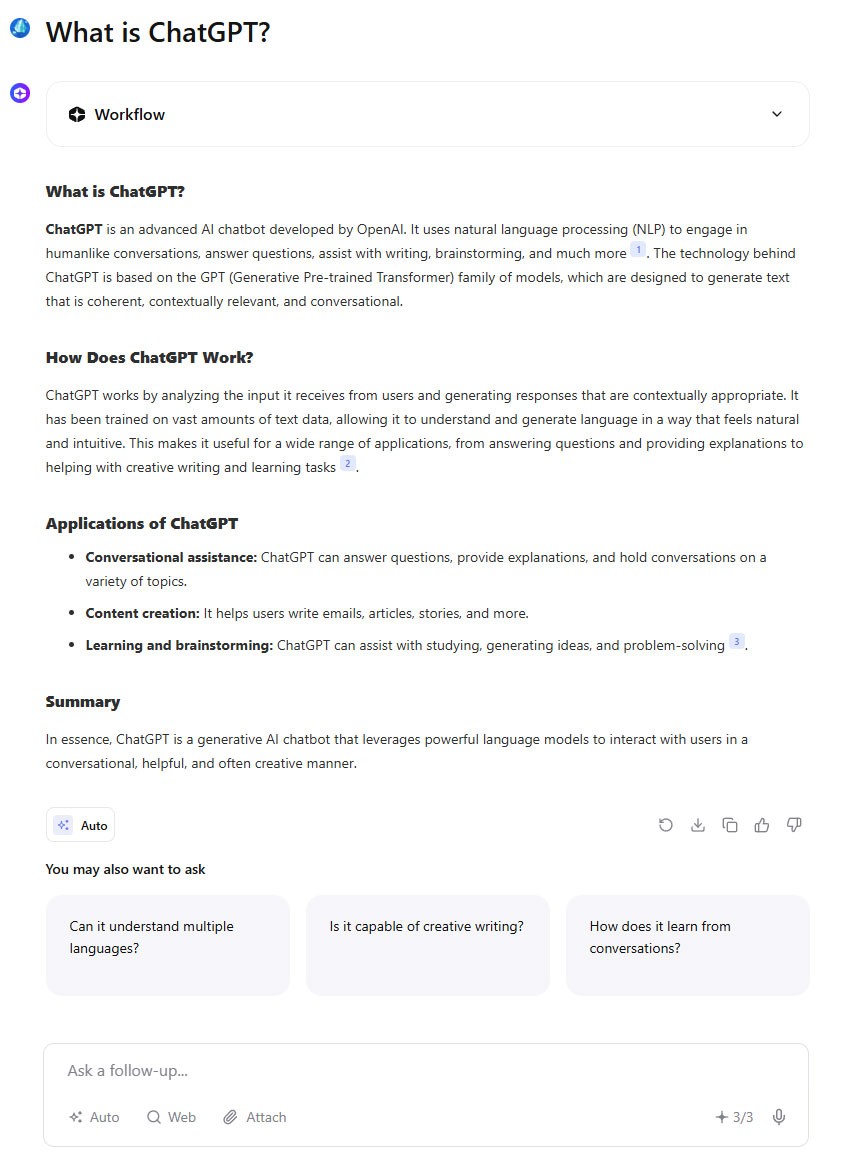
You.com’s answer is divided into three main sections with clear headings: “How Does ChatGPT Work?” and “Applications of ChatGPT.” This structure makes the information easy to scan and digest. Finally, it provides a one-sentence summary, which is a great, concise way to wrap things up.
Poe’s Answer
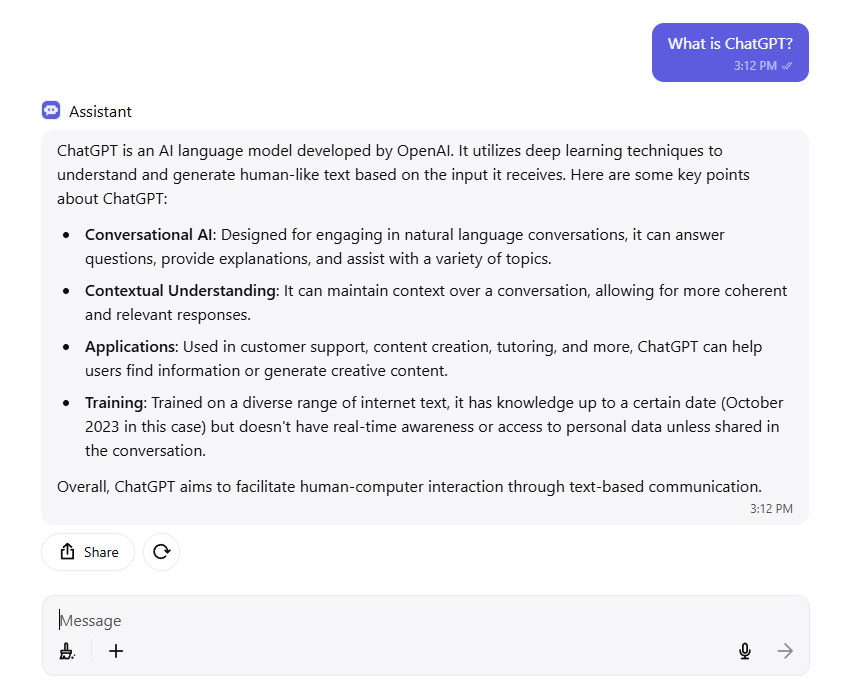
When we look at Poe’s answer, is clear and straightforward, with a formal but not overly complicated tone. It starts by explaining what ChatGPT is, then lists some key features: it can converse like a human, maintain context, has various applications, and is trained on internet text up to a specific date. The focus is on giving a general idea of what ChatGPT does and what it’s useful for, without diving into heavy technical details.
AI Chatting’s Answer
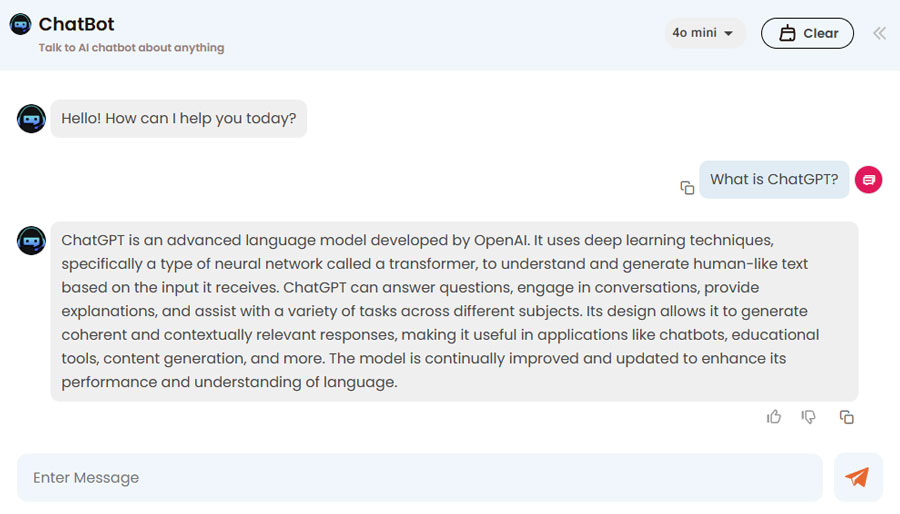
This answer gets straight to the point without any extra fluff or casual examples. The tone is like a technical article or a dictionary definition. The text is a single block, written as a continuous paragraph. It doesn’t use any bullet points or lists to organize the information.
Chatbot App’s Answer
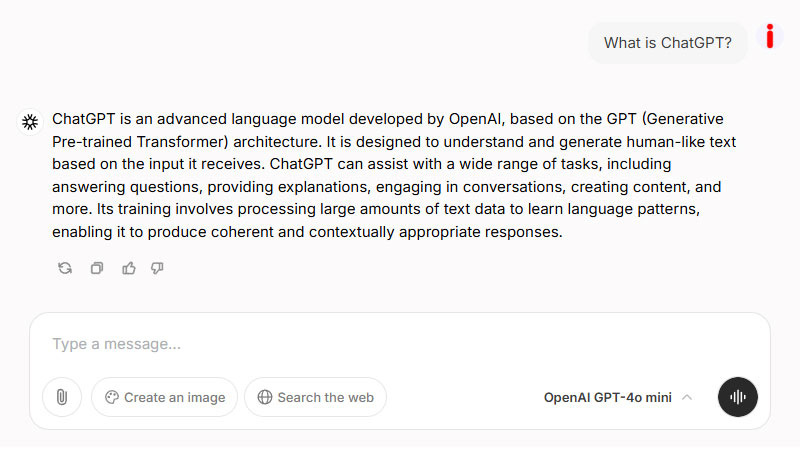
Chatbot App’s answer acts exactly like a dictionary definition, getting straight to the point without any introduction. What it is, what it does, and how it’s trained.
The text’s structure is completely linear. It starts with a definition, then lists its uses, and finally explains how it was trained. The tone is entirely neutral and informative. There are no conversational or emotional phrases; it just presents the facts.
DeepAI’s Answer
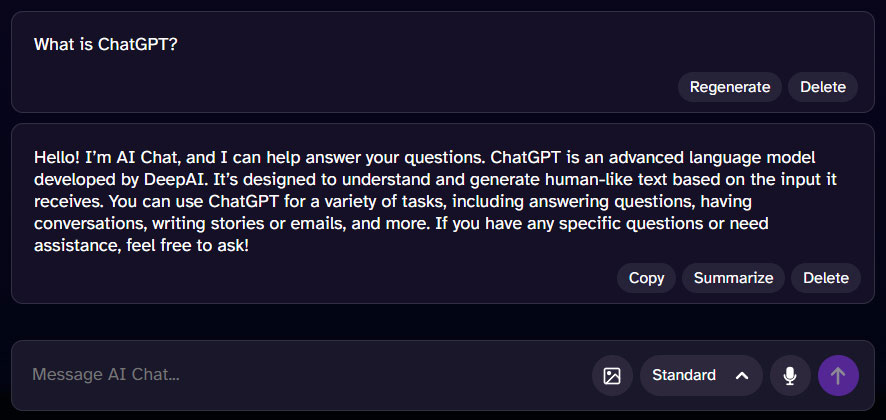
Interestingly, DeepAI starts its answer by introducing itself in a friendly way, but then makes a mistake: it says that ChatGPT is an advanced language model developed by DeepAI, basically confusing itself with ChatGPT.
Consensus’s Answer
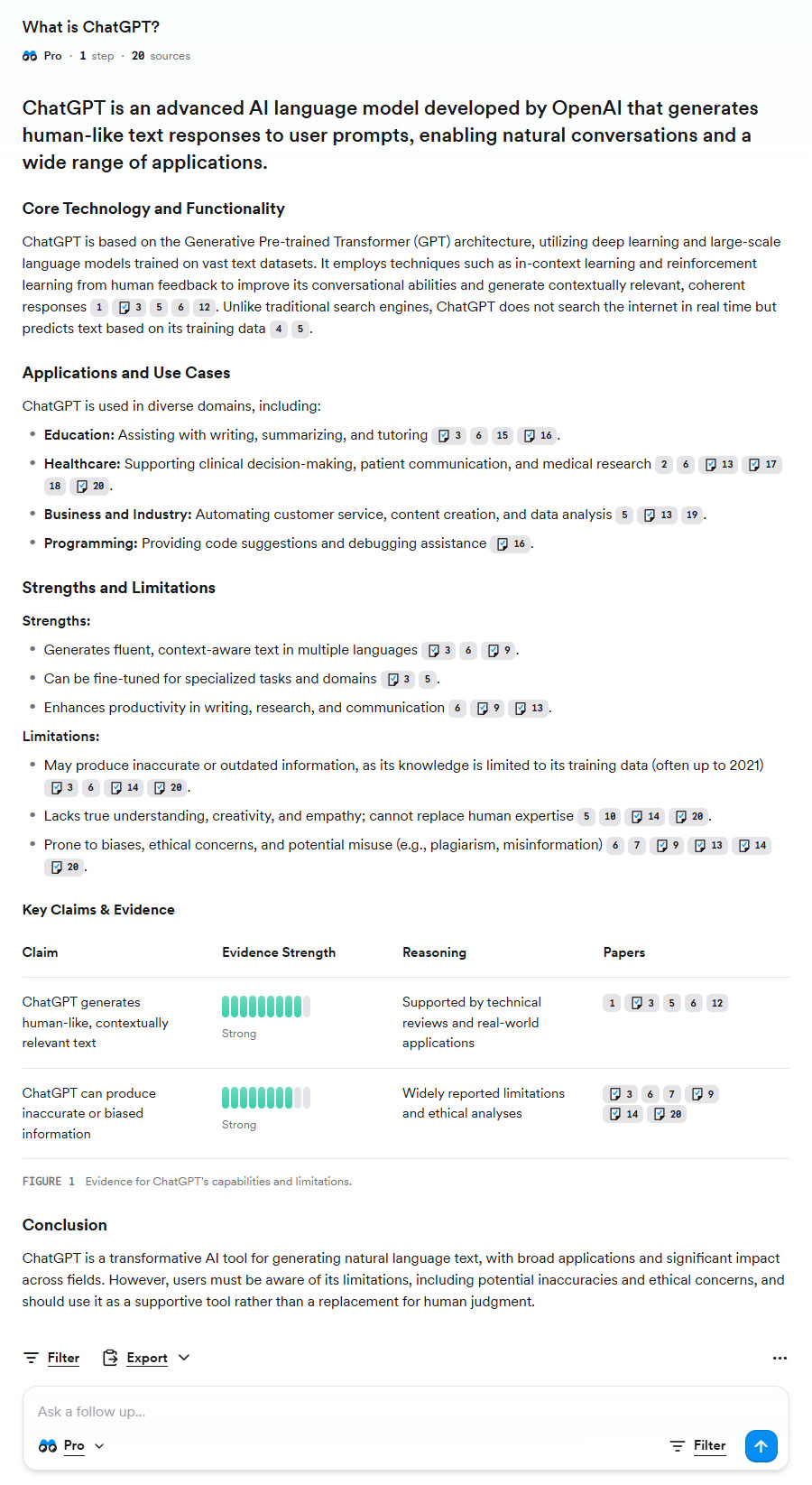
This answer is written in a very formal and precise style, like a technical paper or a scientific report. It’s highly structured and aims to cover everything comprehensively.
It starts with a broad and complete definition of ChatGPT. Then, it dives into a section called “Core Technology,” using lots of technical terms like “Generative Pre-trained Transformer” and “reinforcement learning.”
After that, it moves on to sections on “Applications” and “Strengths and Limitations,” detailing each with full lists. The tone is completely neutral and technical, lacking any personal touch.
The final section is a table that examines “Claims and Evidence,” which shows a clear emphasis on precise, well-documented information. Overall, this answer is best for a technical audience or someone looking for complete, categorized information.
Julius’s Answer
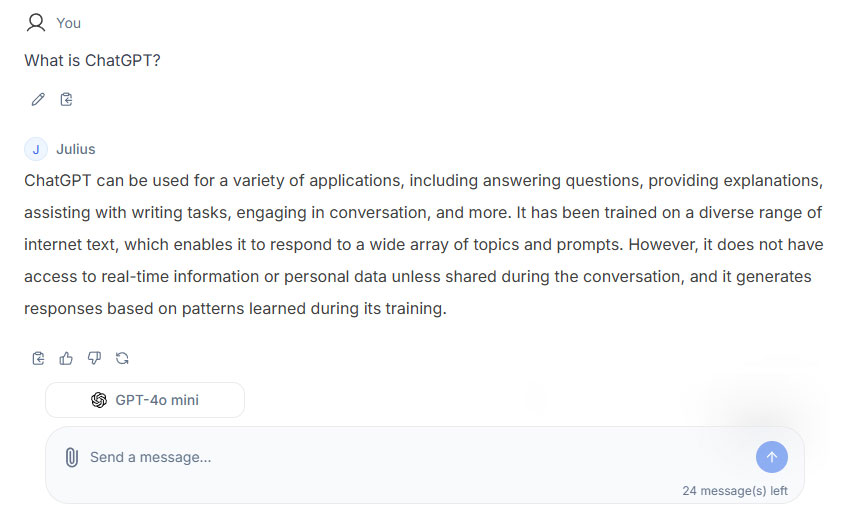
This answer is quite formal and dry, as if you are reading a scientific paper. The information is complete and precise, covering what it is, its applications, and even its limitations. The structure is very organized: first the definition, then the architecture, and finally the uses. It reads more like an educational text than a friendly conversation.
TalkAI’s Answer
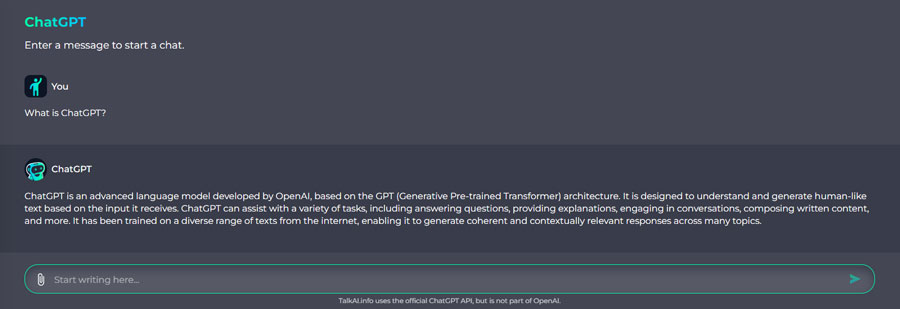
This response directly answers the question without any unnecessary information. It’s great for someone who wants a complete and concise overview.
TextCortex’s Answer
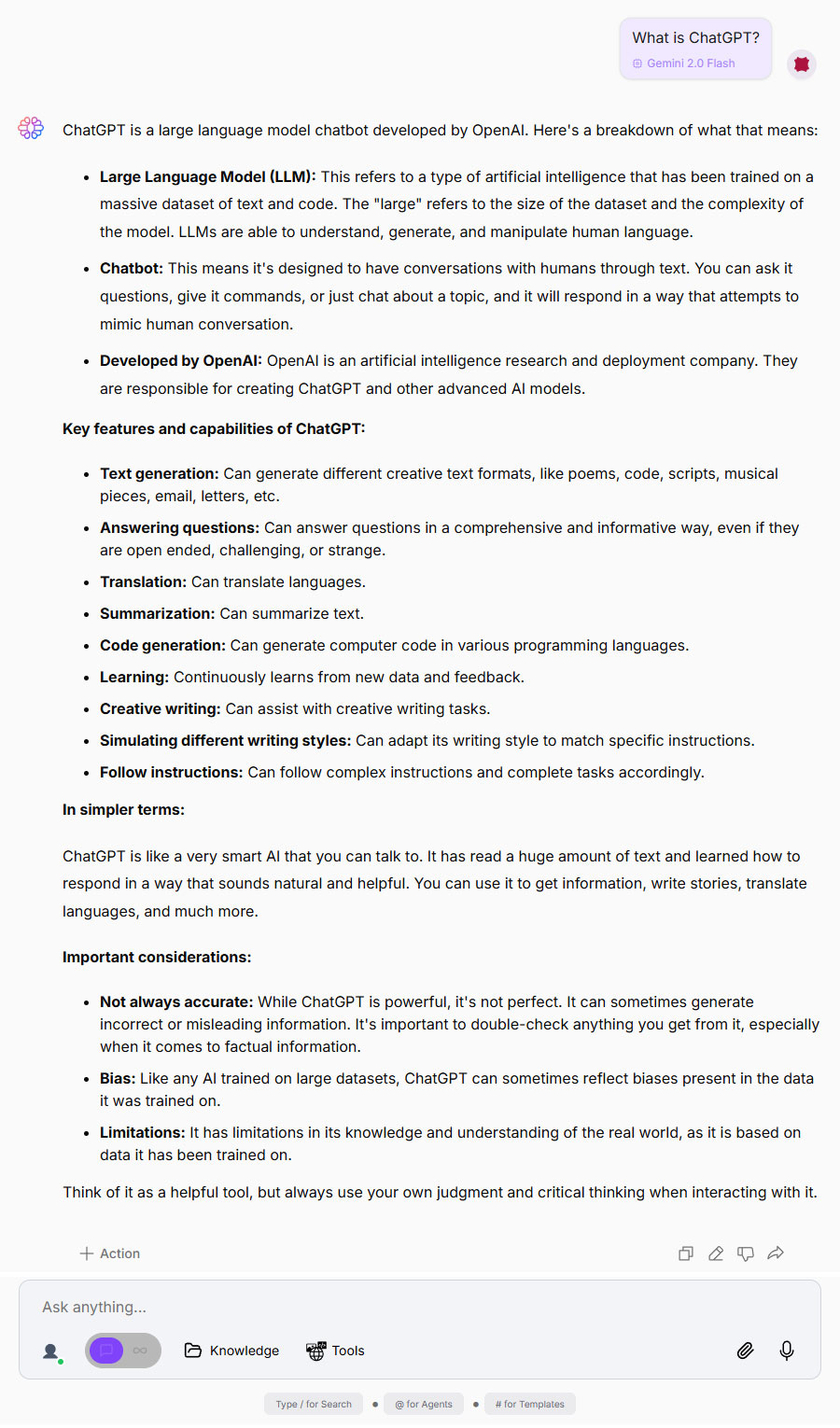
TextCortex’s answer is very structured and organized. It starts with a main definition and then breaks down the key terms one by one, like Large Language Model and Chatbot.
It’s interesting that it uses bolding for keywords, which makes the text easier to read and understand. At the end, there’s a section titled “In simpler terms” that makes the explanation much more straightforward and casual.
Merlin AI’s Answer
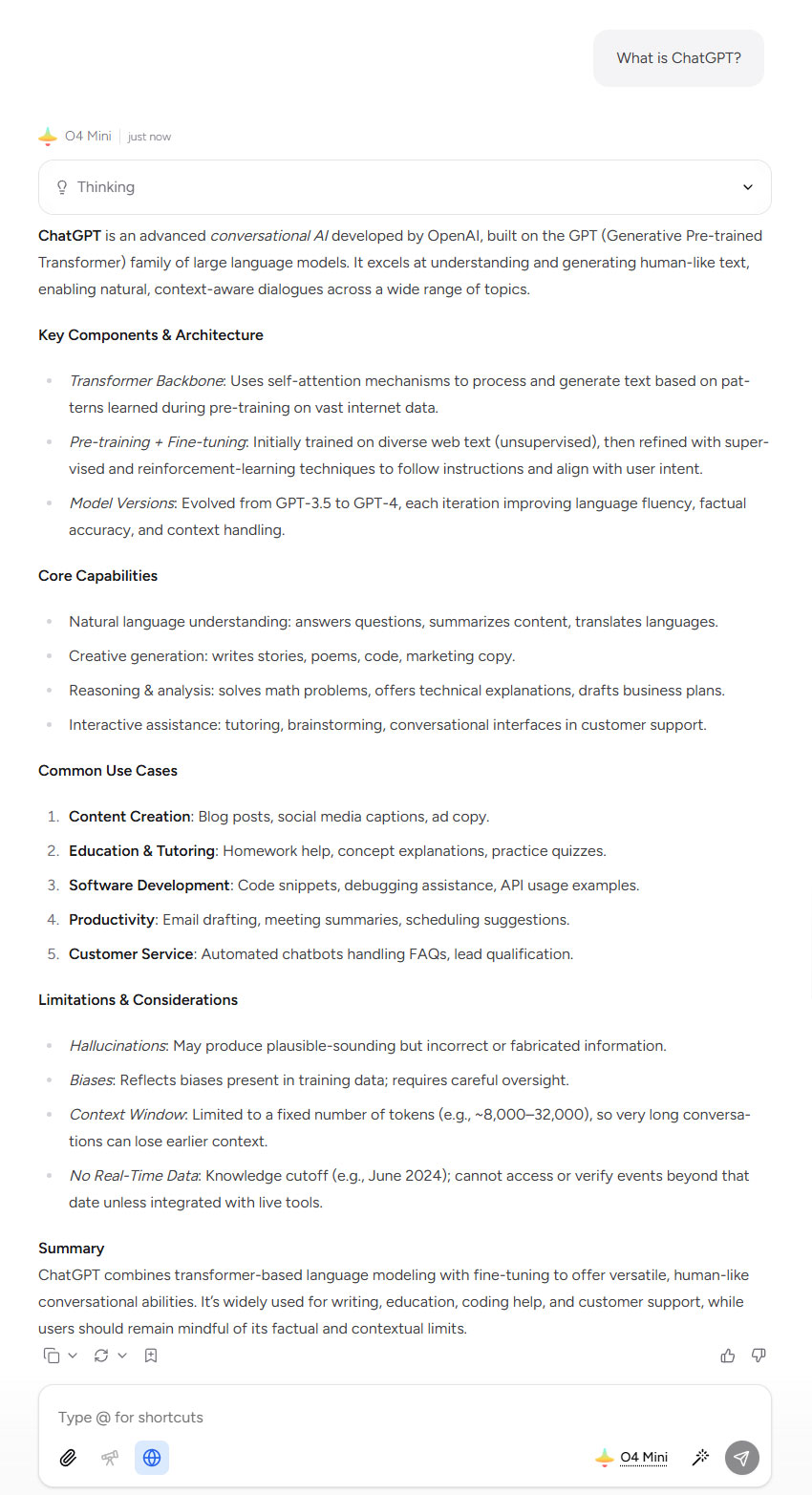
Merlin AI’s answer was super detailed and comprehensive, almost like it was written for a technical paper. The tone was very formal and technical, using specific jargon like “Transformer Backbone” and “self-attention mechanisms.”
The structure was very organized, breaking down the information with clear headings:
- It started with a brief definition.
- Then it moved on to key components and architecture.
- After that, it explained the core capabilities.
- Finally, it listed common use cases and limitations.
Pi’s Answer
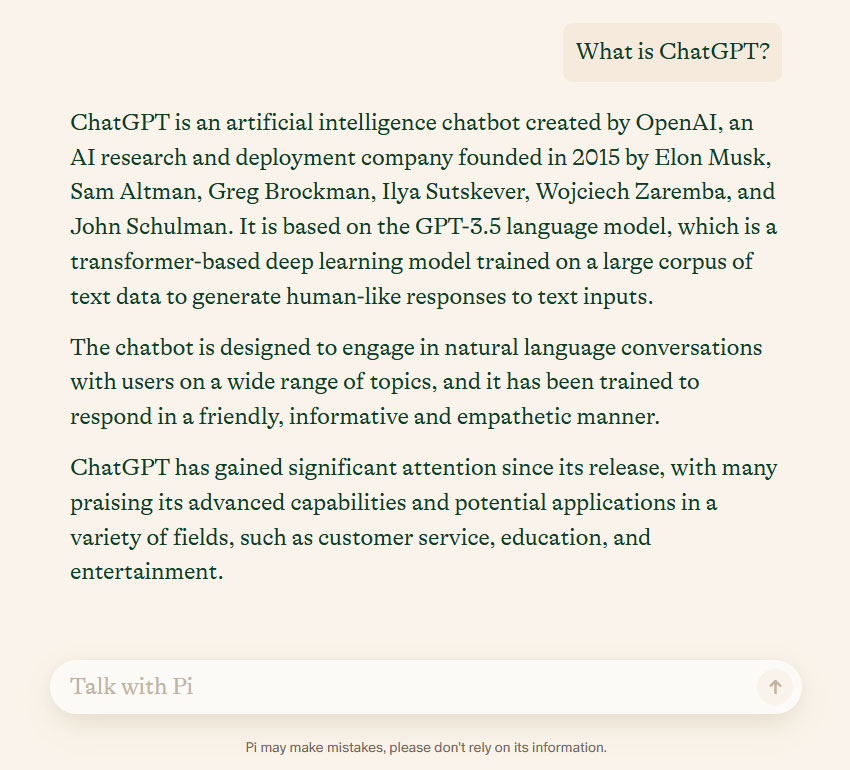
Pi’s answer is more like an encyclopedia, using scientific and specialized terms like “corpus of text data” and “transformer-based deep learning model.”
The structure consists of consecutive paragraphs, each explaining a different aspect. It starts by defining what ChatGPT is and who created it, then moves on to how it works, and finally mentions its applications and reception.
The tone is very neutral and informative, aiming to cover all the details. It’s clearly a answer generated by an AI, lacking a natural and personal touch.
Mistral AI’s Answer
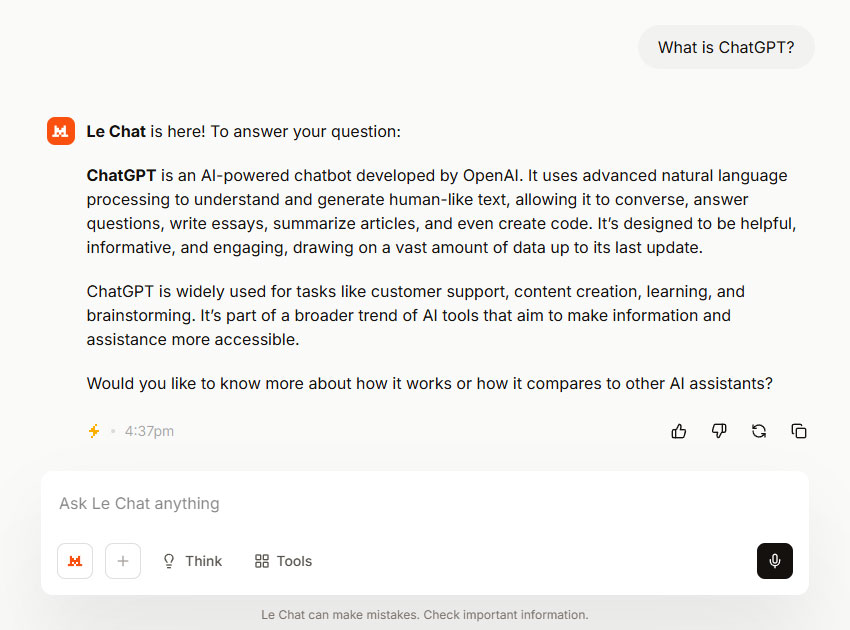
The tone is friendly and very relaxed, starting right away with “Le Chat is here!”, which feels very personal. Answer is structured into two main paragraphs and a final question. It starts with a general explanation, then lists its uses, and ends by asking a question to continue the conversation.
First, it briefly explains what ChatGPT is, then lists its capabilities and uses, and finally describes its general applications. The interesting point is that it immediately highlights how helpful and useful it is.
Analysis and Comparison
After reviewing the answers, I’ve categorized them into three main groups, each with a different approach to defining ChatGPT. The first group, which includes Gemini, DeepSeek, Claude, Consensus, Perplexity, Chatsonic, TextCortex, Merlin AI and You.com, provided a highly comprehensive, accurate, and structured answer. These models went beyond a simple definition, delving into details like functionality, applications, limitations, and even history. Consensus stood out with its unique, academic approach, presenting a table of claims and evidence. At the same time, Gemini and Claude provided highly readable and valuable content for an in-depth article. This group of chatbots is the best option for anyone seeking detailed and thorough information.
The second group, including ChatGPT, Grok, Poe, and Mistral AI, provided a concise and direct answer. Their answers accurately addressed the core question without getting into complex details. This group is ideal for users who just need a quick, functional answer.
Finally, the third group, which includes Meta AI, Julius, AI Chatting, Chatbot App, Pi, TalkAI, and DeepAI, provided a very basic definition. These answers are designed for quick conversational exchanges and don’t offer enough information for a deep analysis. Interestingly, DeepAI confuses itself with ChatGPT.
Conclusion
My conclusion is that the quality and richness of chatbot answers vary greatly depending on their design philosophy. For writing a comprehensive, analytical article, the best approach is to focus on the answers from the first group (the comprehensive and in-depth models). You can then use the answers from the second group to compare writing styles and tones, and the third group to highlight the difference in the level of answers.
Comparison Table
| Criterion | Gemini’s Answer | ChatGPT’s Answer | DeepSeek’s Answer | Claude’s Answer | Consensus’s Answer |
| Structure & Readability | Excellent. The use of headers and bullet points makes the answer very easy to read. | Good. It has a simple structure with bullet points. | Good. It provides a clear and organized answer using simple lists. | Excellent. The use of headers and separated lists gives the answer a very organized structure. | Excellent. The presentation of information in specific sections and the use of a table makes it very readable. |
| Comprehensiveness | Highly Comprehensive. Goes beyond the definition to mention capabilities, uses, and the developer. | Good. Provides a functional summary of core concepts and applications. | Comprehensive. It gives an accurate definition along with key explanations of functionality and uses. | Highly Comprehensive. Details technical aspects, capabilities, versions, and limitations. | Highly Comprehensive. The most in-depth answer, discussing strengths, limitations, and ethical considerations. |
| Tone | Educational and friendly. The tone is professional yet engaging. | Concise and direct. It has a very practical tone without frills. | Professional and neutral. It has a direct, accurate, and impersonal tone. | Professional and precise. The tone is purely analytical and focused on information. | Formal and academic. The tone is similar to a research paper. |
| Accuracy | Highly Accurate. All information is correct and up-to-date. | Highly Accurate. The core information is presented correctly. | Highly Accurate. The information provided is completely correct and reliable. | Highly Accurate. All technical and practical details are correctly stated. | Highly Accurate. All information and points made are completely correct. |
| Examples | Good. It provides diverse examples of content creation, coding, etc. | Good. It mentions practical examples in conversation and problem-solving. | Good. It includes examples of common applications within the text. | Excellent. It provides a complete list of examples like writing essays, code, poems, and more. | Very Good. It provides useful examples presented in categorized sections. |
